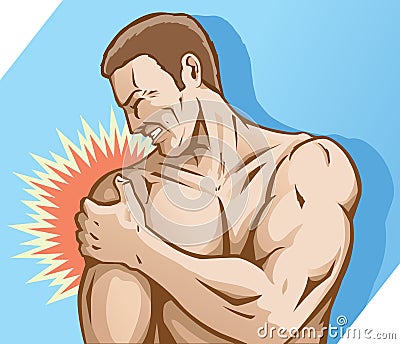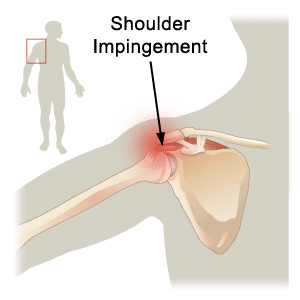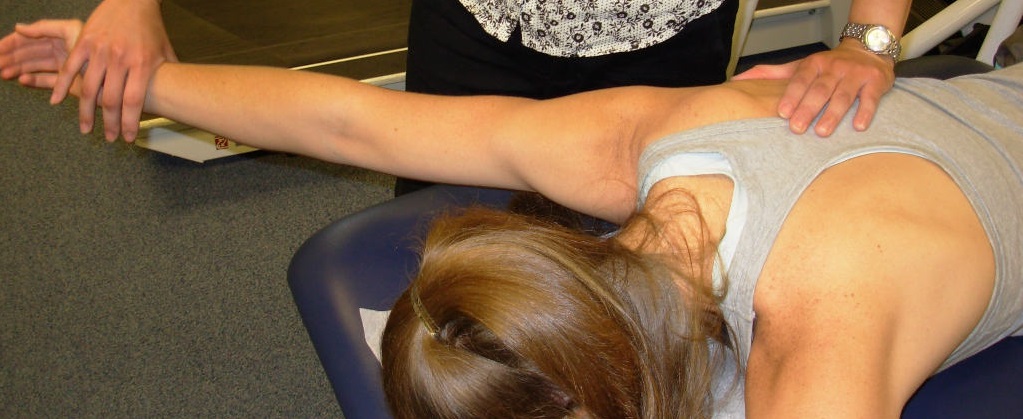Injuries;
Ugh, WHY ME!!!!!!!!!!!

I have been a bit slack on the blog posts this week as I am totally out of sync with my routine. I had been having trouble with my left shoulder, as mentioned last week and this week, I really set myself back.
I had been training very hard to try make up for my slippery weekend the week before.


Over the weekend my shoulder was niggling and I should have read the signs and rested.
Instead, I decided to have my first golf lesson with my boyfriend.
I had been talking about it for weeks, so Sunday I took the plunge.
It was great trying something new and I loved the challenge of learning a new skill.
I'll admit, I was unaware of the upper body strength required for golf.
There are so many specific movements and postures required to achieve the perfect swing. I am an impatient person and instead of just learning the basics, I insisted on being allowed to hit some balls, and by some; I mean a lot.
It was only a couple of hours later I realised the damage I had done.
I had a severe pain in the front of my shoulder and it was travelling down the front of my upper arm.
I took some anti-inflammatories and rubbed in some bio-freeze gel and hoped that would solve the problem. I woke Monday with the same intense pain and knew I would need physiotherapy treatment.


Over the weekend my shoulder was niggling and I should have read the signs and rested.
Instead, I decided to have my first golf lesson with my boyfriend.
I had been talking about it for weeks, so Sunday I took the plunge.
It was great trying something new and I loved the challenge of learning a new skill.
There are so many specific movements and postures required to achieve the perfect swing. I am an impatient person and instead of just learning the basics, I insisted on being allowed to hit some balls, and by some; I mean a lot.
It was only a couple of hours later I realised the damage I had done.
I had a severe pain in the front of my shoulder and it was travelling down the front of my upper arm.
I took some anti-inflammatories and rubbed in some bio-freeze gel and hoped that would solve the problem. I woke Monday with the same intense pain and knew I would need physiotherapy treatment.
It is vital you listen to your body and respond accordingly. I have been resting all week to try and get back on track but found it very difficult as I love exercising and feel uneasy when I can't.
As I was not burning as many calories as usual I had to adjust my food intake for the week also.
I brought salads for my lunch with a mix of fresh leaves, nuts, some raw vegetables and protein, either chicken or eggs.
As I was not burning as many calories as usual I had to adjust my food intake for the week also.
I brought salads for my lunch with a mix of fresh leaves, nuts, some raw vegetables and protein, either chicken or eggs.
Weight lifting is great, whether it's to build muscle mass, tone your body or boost your metabolism. It's a fun way to work out that keeps your body and mind challenged.
Unfortunately, it can also be a dangerous way to exercise if you don't take the proper precautions.
Pain and discomfort may result from several things, such as doing a lift improperly, overuse of the muscles or trying to lift too much weight. For me, my initial injury could be a result of a small bit of each of these.
There are several common injuries found among weight lifters.
These occur in the areas of the body which are used the most often in weightlifting, such as the back, shoulders and legs.
These occur in the areas of the body which are used the most often in weightlifting, such as the back, shoulders and legs.
This list details the most common weight lifting injuries, including how they are caused and the symptoms that are often experienced along with them:
1. : SHOULDER IMPINGEMENT SYNDROME

This injury is caused by an inflammation to the tendons around the rotator cuff in the shoulder.
This is typically caused by any overhead weight lifting activities, such as lateral raises, bench presses and shoulder presses.
Typically, the first signs of this injury are pain in the front of the shoulder and the side of the upper arm.
The pain will first be noticeable only when raising the arms, but if the injury worsens it may cause pain while lying down or after exercising as well. With shoulder impingement syndrome, the pain will stop before the elbow. Pain extending beyond the elbow may indicate another problem, such as a pinched nerve.
This is typically caused by any overhead weight lifting activities, such as lateral raises, bench presses and shoulder presses.
Typically, the first signs of this injury are pain in the front of the shoulder and the side of the upper arm.
The pain will first be noticeable only when raising the arms, but if the injury worsens it may cause pain while lying down or after exercising as well. With shoulder impingement syndrome, the pain will stop before the elbow. Pain extending beyond the elbow may indicate another problem, such as a pinched nerve.
2. ROTATOR CUFF TEAR:

A tear to the rotator cuff may occur with the same exercises that could cause shoulder impingement syndrome. However, a tear is a much more serious condition that comes with intense pain immediately after the tear occurs. The arm will become weak and a snapping sensation may also be felt. Depending on the severity of the tear, surgery may be required in order to treat this injury.
3. PATELLAR TENDONITIS:

This injury involves inflammation to the tendon connecting the kneecap to the shinbone. It is often a result of the quadriceps muscles being too tight or overused. This adds stress on the kneecap, which causes the inflammation. The condition is marked by pinpoint pain at the base of the kneecap. Hack squats, lunges and any weight lifting with the legs can potentially cause this injury.
4. BACK SPRAINS AND STRAINS:


Because many weight lifting exercises require the use of the back, strains and sprains in this area of the body are common. Sprains involve torn or stretched ligaments in the back, while a strain affects torn muscles or tendons. In both cases, pain, swelling and trouble moving the back easily are common symptoms. Rows, bench presses, dead lifts and curls are some of the exercises which may cause these types of injuries.
5. HERNIATED DISK:

Another injury common among weight lifters is a herniated disk.
This condition occurs when comes of the cushions between the vertebrae in the backbone either slips out of place or ruptures. This can be caused by trying to lift heavy weights with your back muscles rather than the muscles in your legs. Because of this, dead lifts are the most likely weight lifting-related cause of this injury.
This condition occurs when comes of the cushions between the vertebrae in the backbone either slips out of place or ruptures. This can be caused by trying to lift heavy weights with your back muscles rather than the muscles in your legs. Because of this, dead lifts are the most likely weight lifting-related cause of this injury.
HOW TO TREAT YOUR INJURIES
There are several steps that you can take in order to help prevent these common injuries, including:
Always be sure to stretch your muscles well before you lift weights.

Making sure that your muscles are warmed up before your workout begins is a great way to avoid strains, sprains, tears and other common weight lifting injuries.

Making sure that your muscles are warmed up before your workout begins is a great way to avoid strains, sprains, tears and other common weight lifting injuries.
Reduce your swelling by taking anti-inflammatory medications AND foods.

You can also take supplements or eat foods high in omega-3 fatty acids, as these are known to help with inflammation. You can also apply ice packs sparingly to help reduce swelling.

You can also take supplements or eat foods high in omega-3 fatty acids, as these are known to help with inflammation. You can also apply ice packs sparingly to help reduce swelling.
Often, weight lifters make the problem worse by continuing to do these exercises even when they begin to feel pain. One of the best steps for weight lifters in preventing injuries is to be aware of their body.
If you begin to feel a new pain, especially if it is felt during a specific movement or exercise, you should consider taking a break from their workout.

Even cutting back on painful activities may help in giving your injuries time to heal.
If you begin to feel a new pain, especially if it is felt during a specific movement or exercise, you should consider taking a break from their workout.

Even cutting back on painful activities may help in giving your injuries time to heal.
If your pain does not subside after taking the steps listed above (or if you experience a more serious injury such as a rotator cuff tear or a herniated disk), see a doctor right away.
I am back to physiotherapy on Monday morning and hoping I get the go ahead to start back into some light training Tuesday morning!

I am back to physiotherapy on Monday morning and hoping I get the go ahead to start back into some light training Tuesday morning!





No comments:
Post a Comment